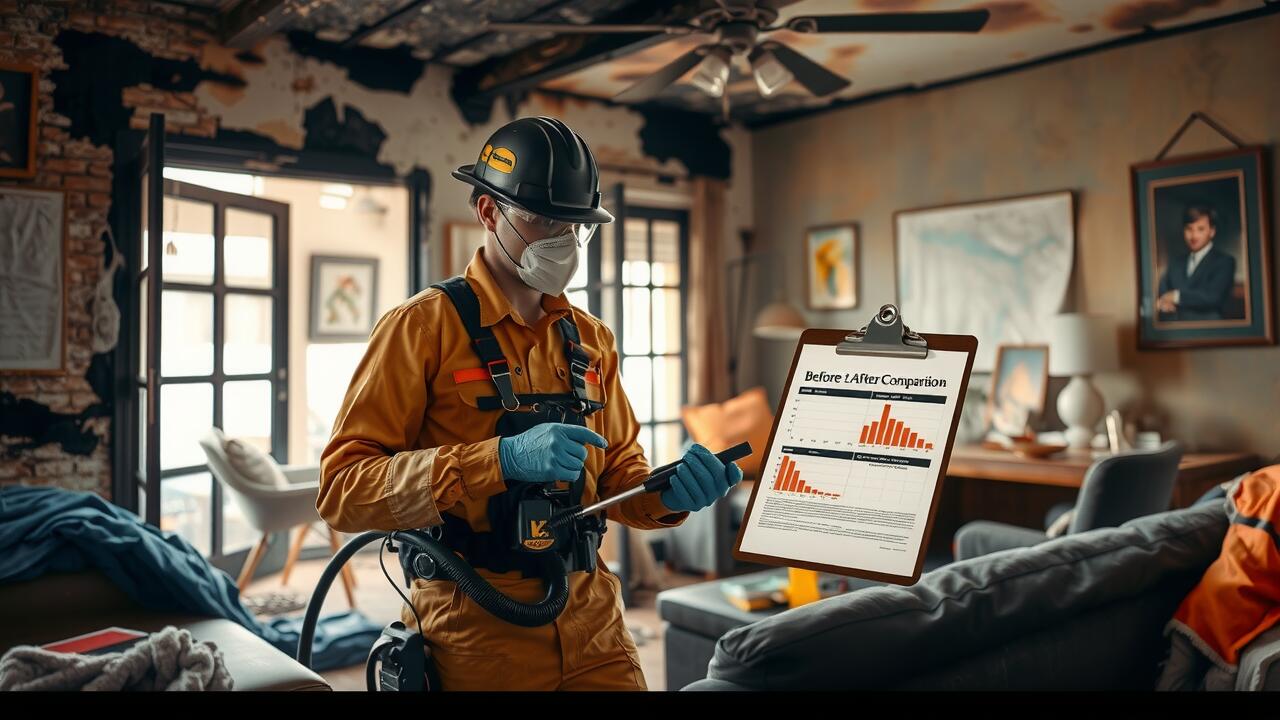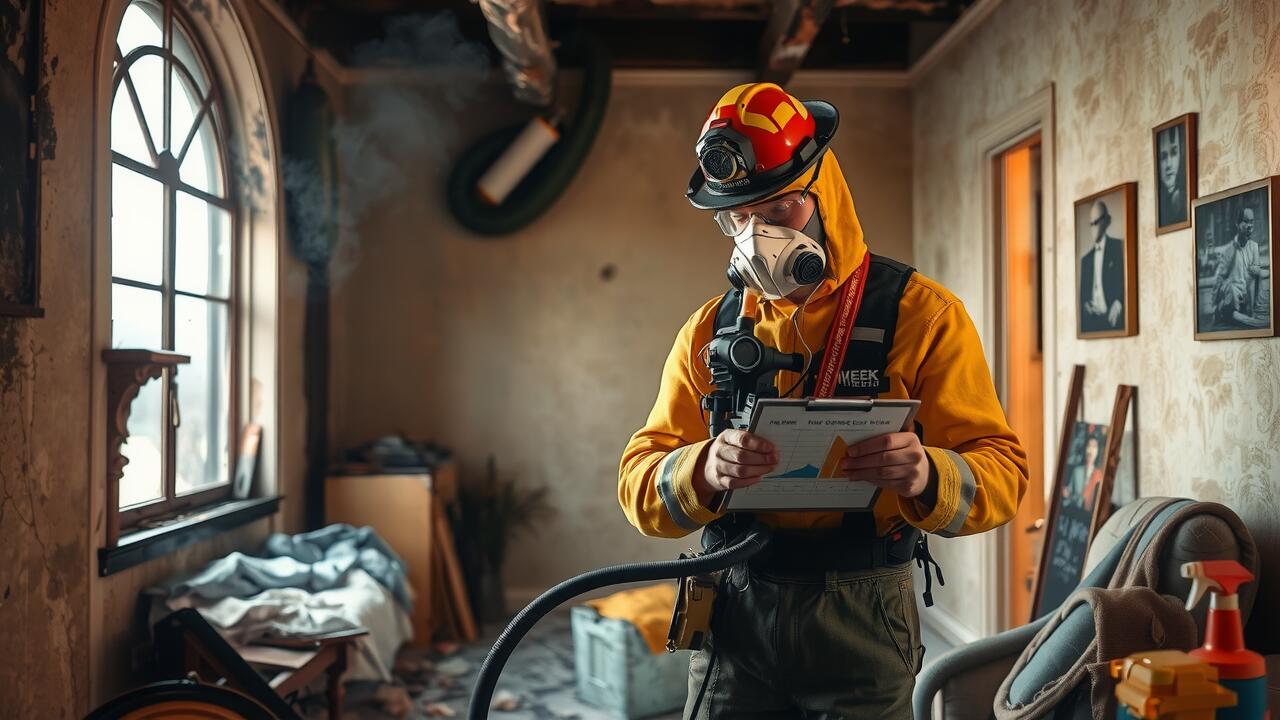
Regional Cost Variations in Smoke Treatment
Regional differences can significantly impact the cost of smoke treatment services. In urban areas, the demand for professional restoration services often drives prices higher. Conversely, in rural regions, competition among service providers may lead to more affordable rates. Other factors such as local regulations and the cost of living can also play a role in determining the final price.
Specifically, Fire & Smoke Damage Restoration in Columbus, Ohio, exemplifies these regional variations. The city’s growing population results in a steady demand for restoration services, which can affect pricing structures. Homeowners should consider contacting multiple providers to obtain estimates and understand the price range for services in their area, ensuring they make well-informed decisions.
How Geography Affects Pricing
Geography plays a significant role in determining the pricing of smoke treatment services. In urban areas, such as Columbus, Ohio, where demand for fire and smoke damage restoration is typically higher, costs may reflect the competitive market and availability of specialists. Those living in rural locations might find lower prices due to less competition, but it may also result in fewer service options and longer response times.
Local regulations and the availability of materials can further influence costs. In regions like Columbus, Ohio, certain environmental laws may mandate specific treatment methods that can drive up prices. Conversely, areas with more lenient regulations might offer cheaper alternatives, leading to varying quality and effectiveness in smoke treatment services. Understanding these geographic factors can be essential for homeowners seeking to budget effectively for restoration needs.
Additional Costs to Consider
When budgeting for smoke treatment, it’s essential to consider additional costs that may arise beyond the initial estimates. Services such as fire & smoke damage restoration in Columbus, Ohio, may involve extra fees for certain procedures or equipment. For instance, specialized equipment for ozone treatment or air scrubbing can significantly increase overall expenses. Homeowners should also take into account the possibility of requiring structural repairs, painting, or other renovations after the cleaning process.
Another factor to consider is the potential need for ongoing maintenance or follow-up treatments. Depending on the severity of the smoke damage, it may be necessary to schedule additional inspections or services over time. Insurance policies might cover some of these costs, but understanding the specifics of your coverage is crucial. Being aware of what is and isn’t included can help avoid unexpected expenses during the restoration process.
Hidden Fees and Charges
When considering smoke treatment, homeowners should be aware of potential hidden fees that can inflate the overall cost. Companies may charge for additional services beyond the initial estimate, such as specialized cleaning techniques or extended labor hours. It’s essential to ask for a detailed breakdown of all charges before committing to any service. This will help avoid surprises that can arise after the work has begun.
For instance, if you seek Fire & Smoke Damage Restoration in Columbus, Ohio, you might encounter variations in the pricing structure based on the specific services provided. Some providers may also include administrative fees or charges for equipment rental that can go unnoticed during initial consultations. Clarifying these potential extras can lead to a more accurate understanding of your total expenses.
Cost-Saving Tips for Smoke Treatment
When exploring cost-saving options for smoke treatment, it’s essential to consider preventative measures that can minimize damage before it starts. Regular maintenance and inspections of smoke detectors and ventilation systems can help catch issues early, reducing the extent of future restoration needs. Homeowners might also want to invest in air purifiers equipped with HEPA filters, which can reduce smoke particles in the air and may help lower the severity of smoke damage over time.
In Columbus, Ohio, homeowners can benefit from local services that specialize in Fire & Smoke Damage Restoration in Columbus, Ohio. Seeking out multiple quotes from certified professionals can help identify competitive pricing. Additionally, some companies may offer discounts for bundled services or loyalty programs for repeat customers. Always inquire about any available financing options to make the treatment more manageable within your budget.
Ways to Reduce Overall Expenses
Researching multiple service providers can lead to better pricing options for smoke treatment. Comparing quotes from companies specializing in Fire & Smoke Damage Restoration in Columbus, Ohio helps identify competitive rates. Reading customer reviews and checking credentials ensures quality service while keeping expenses in check.
Preventive measures can also result in long-term savings. Implementing smoke detectors and regular inspections can minimize fire risks and potential damage. Establishing a maintenance routine not only protects your property but may lower future restoration costs.
FAQS
What is the average cost of smoke treatment?
The average cost of smoke treatment can vary widely depending on factors such as location, the extent of the damage, and the specific services required. Generally, you can expect to pay anywhere from $200 to $2,500.
How does geography affect smoke treatment pricing?
Geography plays a significant role in smoke treatment pricing. Areas with a higher cost of living or a greater demand for restoration services typically have higher prices. Urban regions may also offer more competitive pricing due to the presence of multiple service providers.
Are there any hidden fees associated with smoke treatment?
Yes, there can be hidden fees associated with smoke treatment. These may include charges for additional inspections, specialized equipment usage, and post-treatment follow-ups. It’s essential to ask for a detailed breakdown of costs before agreeing to services.
What additional costs should I consider when budgeting for smoke treatment?
In addition to the base cost of smoke treatment, consider potential expenses such as repairs to damaged structures, replacement of affected furniture, and any necessary cleaning of HVAC systems. These factors can significantly increase the overall budget.
What are some tips for saving money on smoke treatment?
To reduce overall expenses related to smoke treatment, consider getting multiple quotes from different service providers, taking advantage of seasonal discounts, and performing minor cleaning tasks yourself. Additionally, checking if your insurance covers smoke damage remediation can help alleviate costs.
